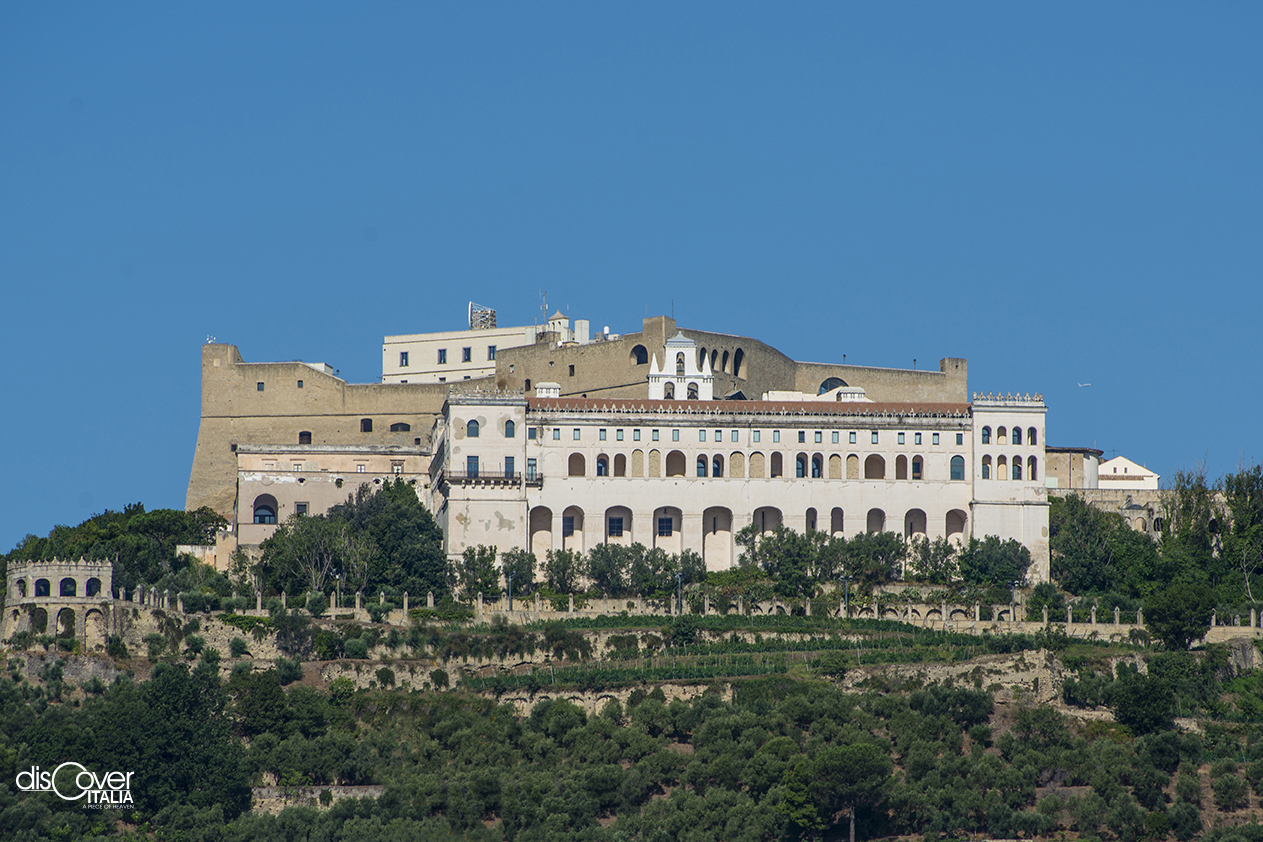From the top of the Vomero Hill, Castel Sant’Elmo dominates the whole city and represents an ideal observation point of its entire gulf. It was precisely the strategic position of the hill, anciently known as Paturcium, which from the 10th century housed the small church of Sant’Erasmo, that suggested to Robert of Anjou the idea of building a palatium castrum.
The architect Tino di Camaino was called to build it. He started the works where the ancient Norman tower of Belforte stood, using for the construction the living yellow tuff rock. It was 1329 and, when Tino died in 1336, other architects replaced him and finished the work in 1343, during the reign of Johana of Anjou. The new Castrum Sancti Erasmi was in a quadrilateral shape and two towers. Which collapsed in earthquake of 1456 together with portions of the walls and other structures. This was how a first restoration started in the middle of the Aragonese period.

With the viceroyalty, the castle in the hills ,the largest in the city, took on the characteristics of a real military fortress, which in the meantime had modified its name to Castel Sant’Elmo (with a clear derivation from the original Erasmus) to then evolute to Elmo. The viceroy Pedro de Toledo decided the transformation, and he entrusted the construction to the engineer Pedro Luis Escrivà, author of the choice, very daring and criticised for the time decidedly daring and much criticized, of the characteristic six-pointed star plan and the absence of defense towers. It started in 1537 and the following year, on the entrance portal, an epigraph was places with the emblem of Emperor Charles V.
The church of the castle was built in 1547 by Pietro Prato but forty years later, a lightning caused a violent fire which destroyed it with other parts of the castle. Few years later, at the end of the century, the famous architect Domenico Fontana worked on it, and in ten years he rebuilt the church and the other parts of the damaged complex.
Poi divenne una prigione e lo restò a lungo. All’inizio del Seicento vi fu recluso il filosofo Tommaso Campanella; durante la Rivoluzione francese toccò ad esponenti filogiacobini. Nel 1799 vi fu innalzato il primo Albero della Libertà, ma al rientro dei Borbone vi furono imprigionati numerosi rivoluzionari, tra i quali Luisa Sanfelice e Giustino Fortunato. Nel periodo risorgimentale, finirono nel carcere del Castello, tra gli altri, Pietro Colletta, Luigi Spaventa e Carlo Poerio.
With the unification of Italy, it became and remained a military prison until 1952. Then, after a long restoration to bring back to light the oldest structure, from 1980s, the castle on the Vomero hill has become a permanent museum space, becoming one of the cultural reference points of the city from which, for centuries, had remained separated and substantially unknown. In addition to participating in the large exhibitions held in Naples in the last twenty-five years, the Castle is currently the seat of the Museum of the Twentieth Century, with works from the period 1910-1980.
Information:
Castle: 8:30 a.m.-7:30 p.m;
Museum: 9:30 a.m.-5 p.m. Weekly closing: Tuesday.
Full price ticket: 5.00€
Reduced ticket: 2,00€
Copyright video, foto e testi © 2020




Comments powered by CComment